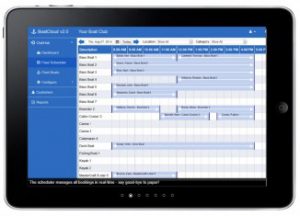Chapter 3, Planning and Preparation is the longest part of the book. It is all about how to plan and prepare for running a learn to scull course. And so I'll publish it in sections over the next few days. I figure little-and-often will be easier on the brain.It has sections today on Dates, Formats and Budgeting your costs.
Chapter 3 – Planning and preparation
This is the largest section in the book. There is a reason for this – all good events are like an iceberg – around 90% of the effort is out of sight “below the waterline” and consists or planning and preparation.
Before submitting the proposal to the committee, you’ll need to think through some other important factors. It’s probably best to try this yourself first and then have a meeting with another club member who will run the course with you (and who may be a coach in order to add in their perspective to the planning)
1. Dates
When choosing dates for your course think carefully about holidays – local school term dates are published on their websites. And don’t forget public holidays like Bank Holidays and Easter. These may make fewer people available for your course as they plan to go away.
Remember the time of year and the weather that is likely will also impact your course. Winter courses are best for experienced athletes and are likely to put off beginners particularly if it rains every day. In the UK warmer weather, although never guaranteed, starts from May and runs to the middle of September. Learning an outdoors sport is always nicer in warm air temperatures than cold ones.
Don’t forget the water temperature is also a factor – if you are running a sculling course, it is likely that someone will fall in and winter time cold water is a serious hazard.
Some well-known courses and the dates they run
Imperial College Rowing Courses – residential (?) and summer
Tideway Scullers School Sculling Course – Easter holidays full time 7 days?
Rob Roy BC Sculling Course – August 5 evenings.
2. Formats
There are three main formats for running a learn to scull / row course: Full day, half day, evenings. Each has advantages and disadvantages and you should consider which is best for your needs.
Full day – great in the school holidays for juniors but harder for working adults. It requires club team to also take time off to run the event unless they are not working. Good for residential courses where participants stay nearby. Unless participants are very fit and can manage three outings a day, it can be hard to fill a whole day with rowing / sculling and so other activities like visits, films and talks will be needed.
Half day – Has similar advantages for juniors to a full day course and may be easier for some working adults who can get to work for half a day. Less appropriate for residential courses. Good for working with less fit athletes who can manage one to two outings per day.
Evenings – often the best format for complete beginners. These can be managed during school terms as well as holidays for both adults and juniors and the club team.
3. Budgeting your costs
It’s important to know what the hard cash costs will be for your course in advance. This will be an important part of the committee’s decision-making when you present your proposal.
After you have chosen the format (full day, half day, evening) of your course take a sheet of paper and list all the items where you may have to spend money. I find it best to list everything even if the financial outlay is nil – then you can clearly show that you have considered everything e.g. food costs may be donated by club members.
Here is a list of possible cost areas
• Promotion
• Food and drink
• Boat hire / insurance
• Coaching fees
• Volunteer expenses
• Room hire
• Video camera and TV hire
• Electricity and other utilities
• Prizes
• Thank-you gifts to volunteer helpers
• Coaching launch petrol
Remember to include a contingency of between 5 – 10% of the total for unexpected costs that may arise when drawing up your budget.
A sample Budget
Promotion – £50 advert in the local newspaper
Food and drink – £400 lunch (£5 per person per day) and tea / coffee / biscuits
Boat hire – 2 x Coxed Quads from local school £50
Coaching fees – Visiting Head coach £50 per day = £250
Electricity and other utilities – in normal club running costs
Prizes – £80
Thank-you gifts to volunteer helpers – £40
Contingency £80
Total costs £900
Chapter 3 part two

![Reblog this post [with Zemanta]](http://img.zemanta.com/reblog_c.png?x-id=1ed5c4c0-5138-41f6-973d-6655e5e1867c)






